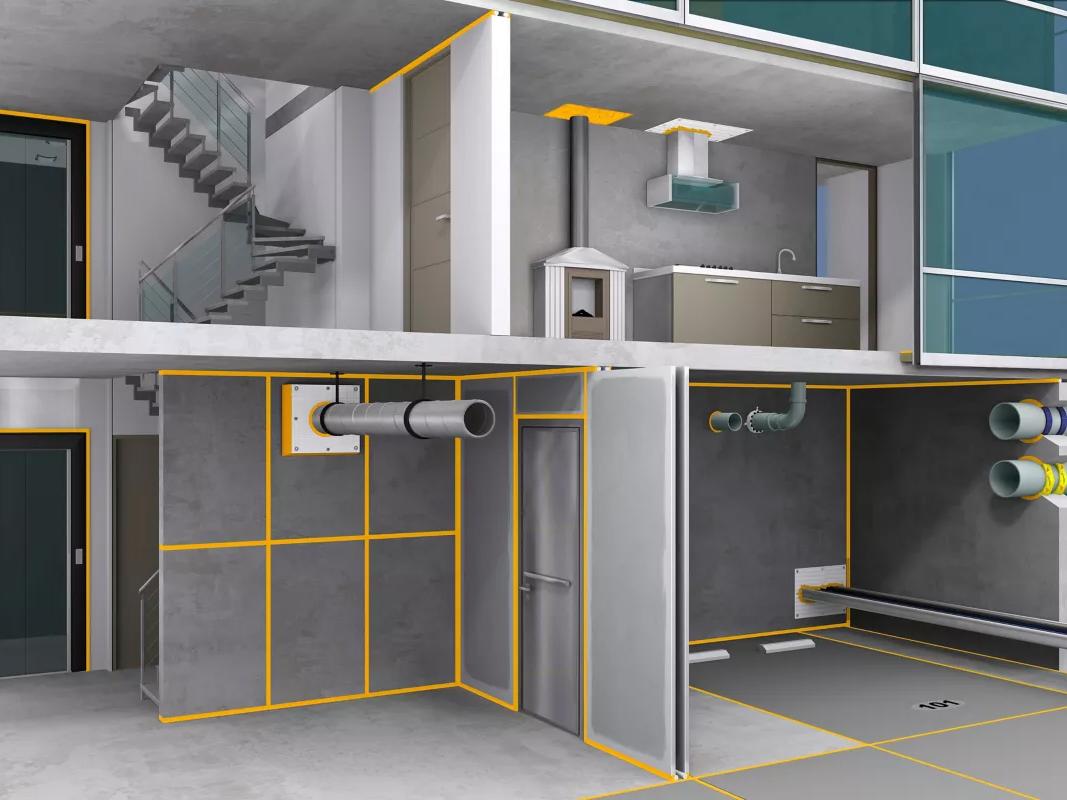
John Gardner, Specification Manager, at Sika looks at the active role passive fire protection plays in helping to contain and control the spread of fire
WHEN you think about ways to protect a building from fire, chances are you may think of smoke alarms, fire blankets, extinguishers, sprinkler systems – all extremely important pieces of equipment but all examples of what is known as active fire protection. Put simply, these all require a degree of action or motion to work and are critical to alerting occupants to the outbreak of a fire and helping to extinguish it.
However, some of the most effective firestopping solutions are those that may be hidden from view, but most certainly shouldn’t be overlooked. Generally referred to as passive fire protection, this term covers a wide range of products, such as fire-resistant walls and flooring, but also specialist products such as sealants, fillers and backing materials. Such passive fire protection is designed to ‘activate’ once a fire has already taken hold and is essential for helping to contain and control it within defined compartments. Not only is passive fire protection important in reducing the potential damage a fire can cause to a building but above all, it can help save lives by increasing the time that people can be safely evacuated in.
All school buildings are required to have a robust active and passive fire strategy in place, as outlined by the Regulatory Reform (Fire Safety) Order 2005. These requirements can be directly addressed and ‘designed in’ to new developments but What about older school buildings that have been modified over the years? In a sector where existing and aging stock still represents a significant percentage, keeping fire safety strategies up to date can be more of a challenge.
If you consider an older school building, any modernisation, extension and renovation work can compromise how effectively fire, smoke and heat may be contained – for example new electricity or IT cabling may create holes in floors and walls, and classrooms with false ceilings could be hiding other areas of concern.
Such potential ‘weak spots’ can be broadly categorised as linear joint seals, cavity barriers, and penetration seals.
Linear joint seals can be found in walls, floors and in so called ‘head of wall applications’, which are the joints between a wall and ceiling or a wall and floor. Cavity barriers are passive fire protection systems which are similar to linear seals but are often wider than standard joints. Typically, cavity barriers can be found between floor slabs and curtain wall facades or in wide gaps within a building and can help limit the spread of fire from one floor to the other. Finally, penetration seals can be found in either a wall or floor, where services such as cables, cable trays, pipes or ventilation ducts pass through them.
To prevent further fire propagation throughout the building, specialist products such as silicone sealants, acrylic sealants, PU foams, fire boards, pipe collars, load bearing compounds, pipe wraps, and backer rods should be considered. When used as part of a considered firestopping strategy, such products can help restore the fire resistance of walls and floors disrupted by linear seals, cavity barriers or penetration services.
Specialist advice is also required, both to devise a robust strategy for new buildings and in terms of existing premises, to assess what fire protection is already in place and more importantly, how it can be improved.
